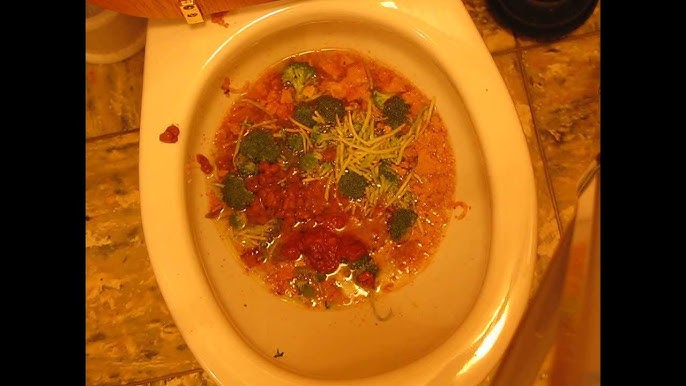Is it Okay to Dispose of Food in the Toilet?
Is it Okay to Dispose of Food in the Toilet?
Blog Article
Listed here below you'll find lots of helpful insights involving Flushing Food Down the Toilet?.

Introduction
Many individuals are commonly faced with the dilemma of what to do with food waste, especially when it comes to leftovers or scraps. One usual concern that develops is whether it's all right to purge food down the bathroom. In this write-up, we'll explore the reasons people might consider flushing food, the repercussions of doing so, and different methods for appropriate disposal.
Reasons that individuals could consider purging food
Lack of recognition
Some individuals may not understand the potential damage triggered by purging food down the commode. They may incorrectly think that it's a harmless technique.
Comfort
Purging food down the bathroom may seem like a quick and easy solution to throwing away unwanted scraps, especially when there's no close-by garbage can offered.
Negligence
In many cases, individuals may merely choose to flush food out of sheer laziness, without considering the repercussions of their activities.
Effects of flushing food down the commode
Environmental impact
Food waste that ends up in rivers can contribute to contamination and injury aquatic ecosystems. Furthermore, the water made use of to purge food can stress water sources.
Plumbing problems
Flushing food can cause blocked pipelines and drains pipes, triggering expensive plumbing fixings and hassles.
Types of food that should not be flushed
Coarse foods
Foods with fibrous appearances such as celery or corn husks can get entangled in pipes and cause obstructions.
Starchy foods
Starchy foods like pasta and rice can take in water and swell, bring about blockages in pipelines.
Oils and fats
Greasy foods like bacon or cooking oils ought to never ever be flushed down the toilet as they can solidify and create obstructions.
Proper disposal approaches for food waste
Making use of a garbage disposal
For homes equipped with garbage disposals, food scraps can be ground up and flushed with the pipes system. Nevertheless, not all foods appropriate for disposal in this way.
Recycling
Particular food packaging materials can be recycled, decreasing waste and minimizing environmental influence.
Composting
Composting is an environment-friendly way to take care of food waste. Organic products can be composted and utilized to improve soil for horticulture.
The relevance of appropriate waste management
Reducing ecological injury
Appropriate waste monitoring methods, such as composting and recycling, aid reduce pollution and protect natural deposits for future generations.
Securing pipes systems
By preventing the practice of flushing food down the toilet, house owners can prevent costly plumbing repair work and preserve the honesty of their pipes systems.
Final thought
Finally, while it may be tempting to flush food down the toilet for comfort, it's important to understand the prospective repercussions of this action. By taking on appropriate waste management techniques and getting rid of food waste properly, individuals can add to healthier pipes systems and a cleaner environment for all.
FLUSH FOOD DOWN THE TOILET?
FLUSHING FOOD CAN CAUSE BLOCKED DRAINS IN YOUR HOME
All of the plumbing fixtures in your home are connected to the same sewer pipe outside of your home. This outdoor sewer pipe is responsible for transporting all the wastewater from your home to the Council sewer mains. Even small pieces of food that go down the kitchen sink can cause problems for your sewer. It should therefore be obvious that flushing larger bits of food, such as meat, risks a clog in either the toilet itself or the sewer pipes. Flushing greasy food is even more problematic because oil coagulates when it cools, coating the interior lining of your pipes.
THE TOILET IS NOT A BIN
Food isn’t the only thing that people shouldn’t be flushing down the toilet. People use the toilet to dispose of all kinds of things such as tampons, makeup wipes, dental floss, kitty litter and even underwear. Water goes to great lengths to educate residents about the high costs and stress placed on wastewater treatment systems simply from people flushing the wrong stuff down the toilet. It costs taxpayers millions of dollars each year, and homeowners thousands in blocked drain repairs.
FLUSHING FOOD IS A WASTE OF WATER
Flushing food is a waste of our most precious resource - water. In June this year Level 1 water restrictions were introduced to protect water supply from drought conditions. Much of New South Wales continues to be affected by prolonged drought with recent figures revealing up to 97 per cent of the state remains in drought. Depending on whether you have a single or dual flush toilet, every single flush uses between five and 11 litres of water. In the current climate this is a huge amount of water to be wasting on flushing food that should be placed in the bin (or better yet, the compost).
https://www.jabplumbingsolutions.com.au/blog/can-you-flush-food-down-the-toilet

I found that page about while doing a lookup on the web. Sharing is good. Helping people is fun. Thanks so much for your time spent reading it.
Book An Estimate Now Report this page